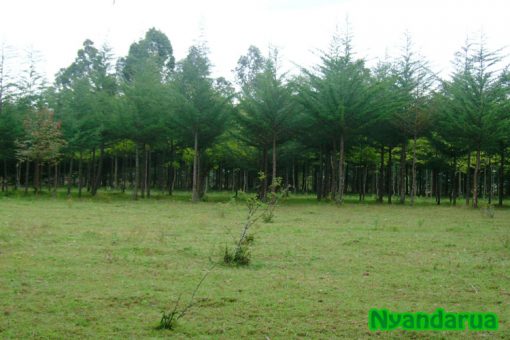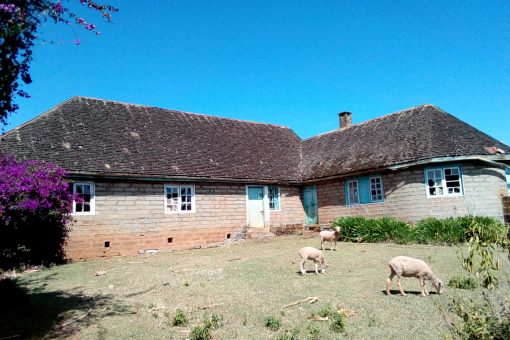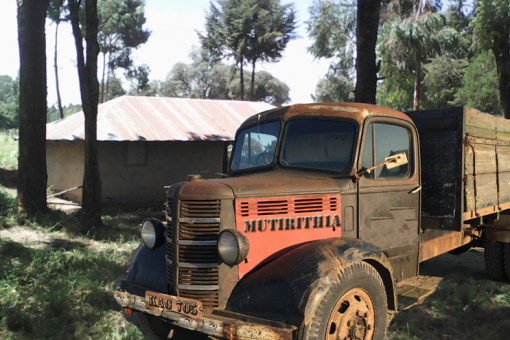For my brothers, there was a time when their style was turned upside down without warning or consultation. All five of them were close in age and size. My father got tired of buying their clothes one at a time.
From one of his travels, he brought two full rolls of Khaki fabric (Ngoora cia Gaaki). He must have found a bargain deal of ‘Buy one get one half off”. Khaki was very common those days. Police, Government Administrative staff and schools, all wore khaki uniforms. The two rolls my father brought were green and grey in color.
One fine morning, he loaded the boys on the pickup and dropped them off at Ng’athos with the two rolls of Khaki fabric. My father always made his deals with the service providers ahead of time before we were brought into the picture. They discussed our fate, agreeing on everything including the price. Bringing us in was always the last piece of the puzzle. Ng’atho already knew exactly what to do with the fabric as agreed upon with our father. The boys opinion was not required. Their job was to stand up straight like soldiers: chin up, chest forward and shoulders back. One by one they had their measurements taken and they left for home. They had no idea what Ng’atho was going to make from those two rolls of fabric. All they could do was wait and wonder.
Finally after a few weeks, our father brought the clothes home and called the boys in, giving each his package according to their size. I still get tickled when I remember those clothes. They were a mix and match, Ng’atho style. Each boy had two shorts and two shirts. Shorts were made from the grey khaki fabric. That was good. The shirts were the joke. They were all short sleeved, but not a single shirt was made of one color. Some shirts were all green with grey sleeves and pockets. Others were Green on the back and the sleeves, but the front was grey with a green pocket. Others were green front and sleeves with a grey back and pocket. The combinations were random, just to make each unique. That was to help the boys identify their shirts easily because clothes sharing was not allowed in my household.
My brothers looked like they worked for a security company that was financially challenged. Just like my Mukurino dresses, the boys clothes were made a size bigger so they did not outgrow them sooner. Those multi colored clothes lasted for years. The boys finished primary school still wearing those clothes in their free time. They went to high school and colleges and when they came home for holidays, I saw them wearing The shirts especially for farming chores. The Khaki fabric was that durable. I am sure those shirts are still somewhere in their Kiumbu if someone bothered to check. Hats off to Ng’atho whose designs endured through the decades. By the late 1980s, we did not see Ng’atho in OlKalou again, and we did not dare ask, in-case our parents thought we were missing his “Designer Labels”.
Today, when I see some of my brothers looking sharp in their real designer clothes like CHAPS by Ralph Lauren, Van Heusen and others, I cannot help but contrast with the Multi Colored Khaki clothes they wore for years courtesy of their master designer Van Ng’atho. Anybody with Ng’atho update?
NB: The shirt in the picture is a designer owned label from a U.S.A. company. I found it interesting that their shirts are a multicolored patchwork by design, almost like the ones Ng’atho made for my brothers back in the 1970s. As described, their colors were Khaki and Green, nowhere near fancy as the one above. But this goes to show you, Ngatho was up to something alright. His designs were ahead of their time and my brothers got to model them all over OlKalou, but nobody, including them, thought they were fancy, or even funny. The boys were embarrassed every time they wore those shirts for more than a decade but they soldiered on until they could afford to dress themselves with their hard earned money, not our fathers.
That is what parenting was back then. Children accepted whatever their parents offered them with humility and appreciation. The children EARNED their independence and got a chance to voice their opinion about matters, only after they started supporting themselves financially without depending on their parents any longer. My brother’s shirts are a good example of that. The parents job was to offer the basic necessities they could afford for their children. The children knew to be contented with whatever was offered, keeping their feelings, opinions and preference to themselves, until such a time when they could afford things for themselves. That was the order of things back then and that is how society and families functioned honorably.



